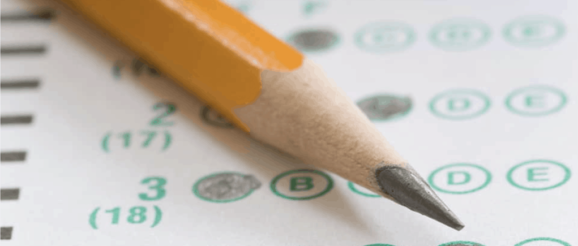Investing in Innovation: Where’s the Federal Support? | Getting Smart

Educators and policy leaders might be forgiven for not often turning to the Federal Register for inspiration. But buried there in the ESSA regulations is a truly inspired effort to resolve one of the most vexing tensions shaping our national discussion on the role of assessment: the Innovative Assessment Demonstration Authority (IADA) pilot.
The IADA invites up to seven states to develop innovative, next-generation assessments that better support student-centered learning, including competency-based assessments, instructionally embedded assessments, interim assessments, or performance-based assessments that better inform instruction and measure the higher-order thinking skills so vital to success in the global economy of the 21st century.
States, districts and schools don’t need federal authorization to adopt student-centered assessment models. But the U.S. Education Department (USED) does have a say when states want to use one of these innovative assessments to meet ESSA’s requirements for an annual, summative measure of whether students have mastered grade-level achievement standards, and do so meeting peer review requirements for alignment, rigor, reliability, validity and comparability.
And herein lies that vexing tension: How do we balance a need for student-centered, instructionally valuable assessments with a need for reliable common measures of student outcomes that are crucial for advancing equity; informing parents, educators and community members of how well their schools are serving their students; and identifying those schools that need additional help? If student-centered assessments are personalized to the needs of individual students and their learning contexts, how can they provide a standard measure to hold schools accountable for lifting all students to the same high bar, albeit through different pathways?
When the New York City Department of Education launched what became the first Innovation Zone in the country in 2010, our driving vision was to empower schools to personalize learning to the needs, motivations and strengths of individual students. We took a portfolio approach: schools could choose to adopt a variety of approaches to personalized learning, including competency-based models that allow students to progress at their own pace as they demonstrate mastery; technology-supported adaptive learning programs that meet students where they are, regardless of grade level; project-based learning models that cultivate students’ holistic critical thinking and problem-solving skills; and more. iZone schools received significant additional funding provided by Federal Investing in Innovation grants and philanthropic support to design, implement, and evaluate these new models. They were also paired with technical assistance providers with expertise in new school designs, including New Tech Network, Reinventing Schools Coalition, Diploma Plus, Big Picture Learning and others.
It’s very, very hard to do this work at scale. Recognizing this, iZone schools asked for waivers from city and state accountability requirements to allow them greater room to innovate. Our answer was “no,” as we thought the risks to students was too high. While it’s challenging work to rethink traditional schooling models, we believed that the annual summative assessments in place were the best measures available to ensure that all of our students regardless of skin color or zip code were being well served by our schools, including those who were piloting innovative new approaches.
The IADA regulations hold this same line. In fact, they outline in great detail how states must demonstrate that innovative and traditional assessments within the state produce the same summative determination of student mastery of the state’s learning standards. In so doing, they are challenging states and their technical assistance providers to resolve the tension between student-centered, locally sensitive assessments and standardized summative tests that ensure comparability statewide. Without this comparability, it is nearly impossible to ensure equity.
Congress is right to hold states and the field to a rigorous standard of both innovation and equity; by forcing the tension, we maintain our values and our commitment to equity while prompting even deeper thinking on new innovative designs.
What is missing is the recognition that these are indeed really hard problems and states have little capacity or expertise to solve them; this is why only three states have applied to take advantage of the flexibilities under IADA. USED and federal appropriators in Congress should recognize the opportunity that ESSA and specifically the IADA has created to reconcile the tensions inherent in our assessment and accountability policies and adequately fund R&D and technical assistance to solve them.
Arthur VanderVeen is the President and CEO of New Meridian, a nonprofit assessment design and development company specializing in cost-effective, custom assessment solutions. He formerly served as Chief of Innovation for the New York City Department of Education.
Stay in-the-know with innovations in learning by signing up for the weekly Smart Update.
